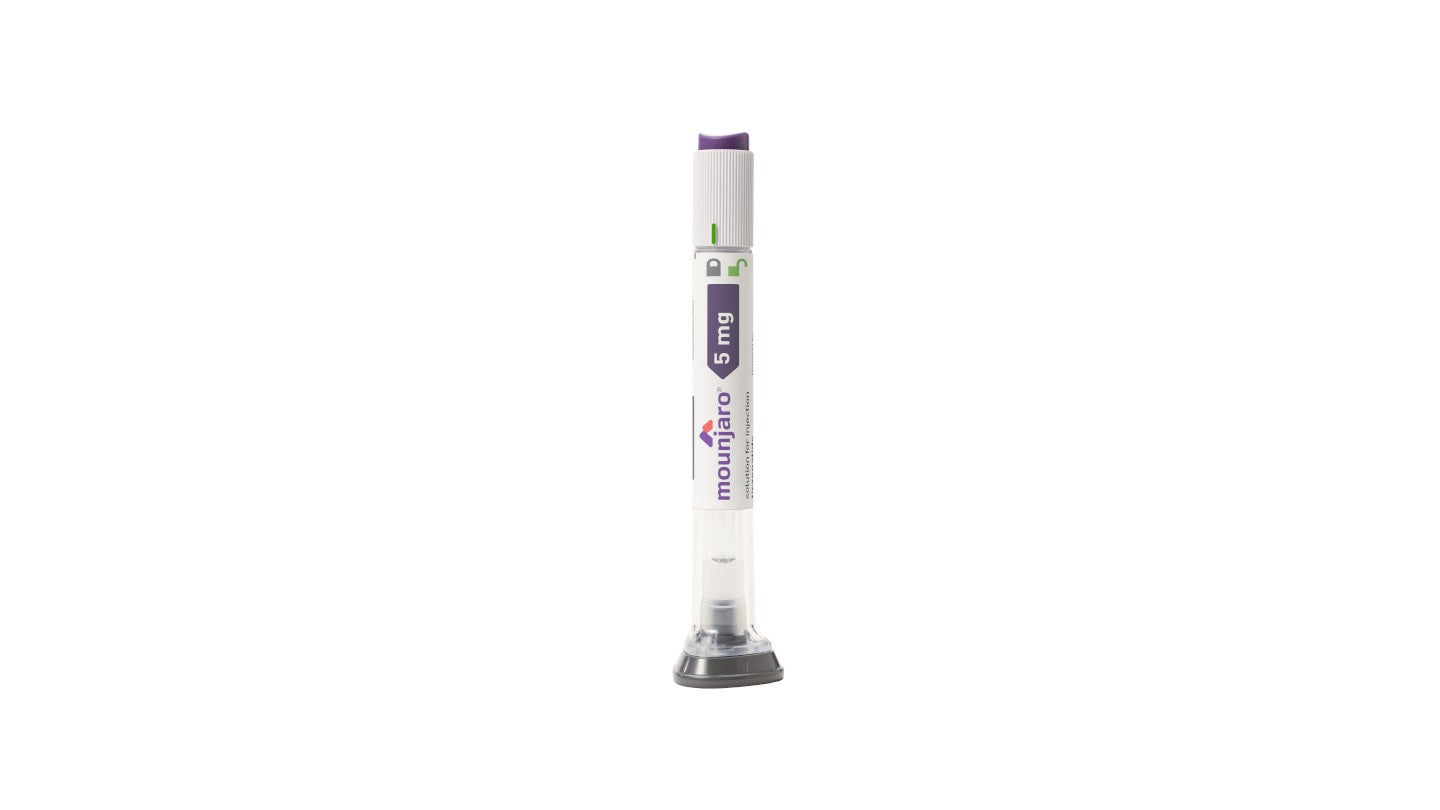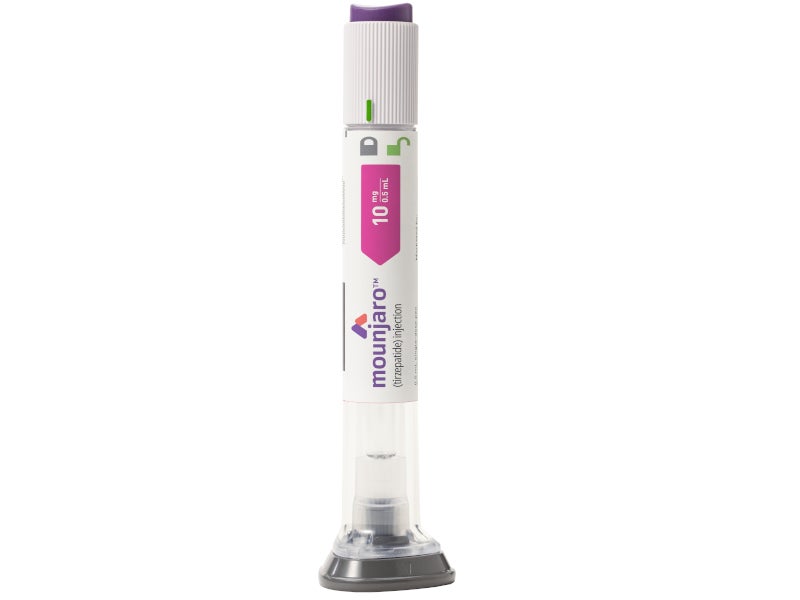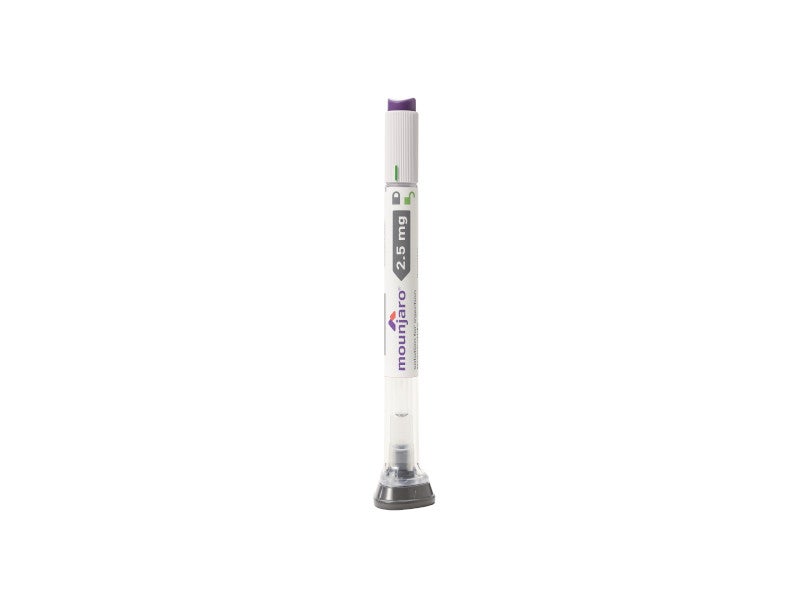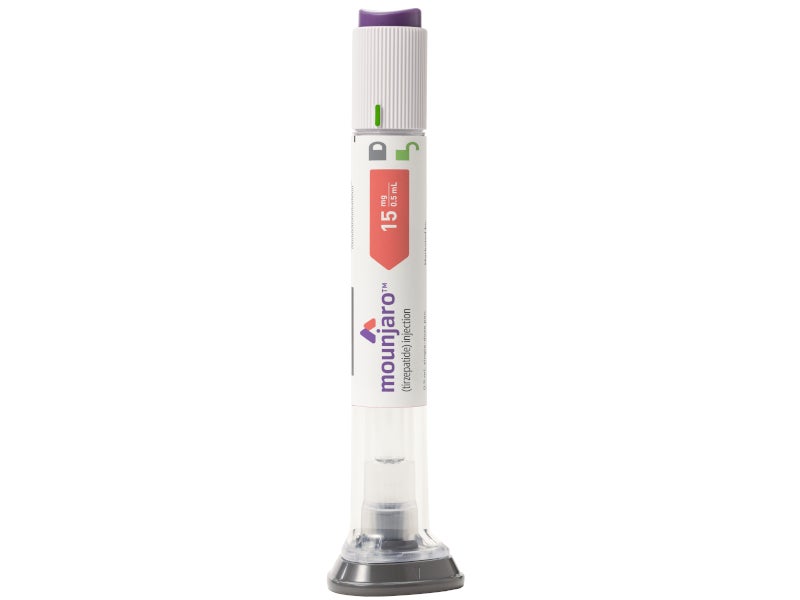Mounjaro™ (tirzepatide) is a dual-targeted, injectable, sustained-release therapy indicated for the treatment of type 2 diabetes (T2D) in adults as an adjunct to diet and exercise.
Developed by Eli Lilly, a pharmaceutical company based in the US, Mounjaro is the first and only once-weekly glucose-dependent insulinotropic polypeptide (GIP) and glucagon-like peptide-1 (GLP-1) receptor agonist to improve blood glucose levels in adults with T2D.
Mounjaro is available in six doses as a clear, colourless to slightly yellow solution. It is available in pre-filled single-dose auto-injector pens for subcutaneous delivery.
Regulatory approvals for Mounjaro
The US Food and Drug Administration (FDA) approved Mounjaro for the T2D indication in May 2022.
The drug received marketing authorisation in the European Union (EU) and Japan in September 2022. Mitsubishi Tanabe Pharma (MTPC) distributes and sells Mounjaro in Japan according to its sales collaboration agreement with Eli Lilly Japan, signed in July 2022. The drug is administered using ATEOS®, a single-use autoinjector device, in Japan.
The drug was also approved in Switzerland and Australia for the treatment of T2D in 2022.
In October 2022, the FDA granted fast-track designation for tirzepatide to evaluate it for the treatment of obesity, or overweight with weight-related comorbidities, in adults. The drug was approved for the conditions under the brand name Zepbound® in November 2023, based on the results of two Phase III clinical trials, SURMOUNT-1 and SURMOUNT-2.
Mounjaro for T2D was approved by Health Canada in November 2023, based on results from the phase Ⅲ SURPASS clinical trial.
The UK’s Medicines and Healthcare products Regulatory Agency (MHRA) authorised Mounjaro for weight loss and weight management in adults aged 18 and above in November 2023. The drug is already used to treat T2D in the UK.
The UK’s National Institute of Health and Care Excellence (NICE) issued a draft guidance recommending the drug to be prescribed for weight loss treatment for individuals with obesity in the UK in June 2024.
Type 2 diabetes causes and symptoms
T2D is a chronic and progressive condition in which blood sugar regulation in the body is impaired, causing excessive sugar circulation in the bloodstream. High blood sugar levels can lead to circulatory, nervous and immune system disorders.
The most common form of diabetes, T2D develops slowly and individuals with the condition can remain asymptomatic for years. Signs and symptoms of the disease can include increased thirst and hunger, frequent infection and urination, unintended weight loss, blurred vision, fatigue, slow-healing sores and numbness or tingling sensations in the hands and feet.
Mounjaro’s mechanism of action
Mounjaro (tirzepatide) is a single molecule that selectively binds to and activates both the GIP and GLP-1 receptors to target GIP and GLP-1, the native incretin hormones.
The activation of these receptors improves the secretion of both first and second-phase insulin and reduces glucagon levels, both in a glucose-dependent manner.
Clinical trials on Mounjaro
The FDA’s approval of Mounjaro for T2D was based on positive outcomes from a Phase III SURPASS programme that included five clinical trials, SURPASS-1, SURPASS-2, SURPASS-3, SURPASS-4 and SURPASS-5:
In SURPASS-1, Mounjaro was studied as a monotherapy. In SURPASS-2, SURPASS-3 and SURPASS-4, the drug was studied as an add-on to the common diabetes medications metformin, sulfonylureas and/or sodium-glucose co-transporter 2 inhibitors (SGLT2 inhibitors). For SURPASS-5, Mounjaro™ was evaluated in combination with basal insulin with or without metformin.
Three doses of Mounjaro- 5mg, 10mg and 15mg – were used for evaluating the drug’s efficacy in the SURPASS programme. The doses were administered subcutaneously once weekly for comparison with placebo (SURPASS-1), semaglutide 1mg (SURPASS-2), insulin degludec (SURPASS-3), and/or insulin glargine (SURPASS-4).
These doses, in combination with basal insulin with or without metformin, were compared with placebo in T2D patients in the SURPASS-5 clinical study.
Patients with T2D who participated in the SURPASS programme achieved reductions of between 1.8% and 2.1% in their blood glucose levels on an average for Mounjaro™ 5mg and between 1.7% and 2.4% for both 10mg and 15mg doses of Mounjaro™.
Mounjaro™ delivered superior blood glucose level reductions against all comparators in the SURPASS programme. Use of the drug also led to significantly greater weight loss in patients than other comparators. Patients treated with 5mg of Mounjaro™ lost 12lb of weight, while those given a 15mg dose saw their weight reduce by 25lb.
The most common side effects reported in patients during the clinical trials were nausea, diarrhoea, decreased appetite, vomiting, constipation, indigestion and abdominal pain.
Additional clinical trials on tirzepatide
Additional clinical trials are being conducted on tirzepatide to evaluate it for the treatment of obesity, overweight with weight-related comorbidities, obstructive sleep apnoea and metabolic dysfunction-associated steatohepatitis (MASH) in adults.
The SURMOUNT-2 trial, a multi-centre, randomised, double-blind, parallel, placebo-controlled trial, compared the efficacy and safety of 10mg and 15mg tirzepatide as an adjunct to a reduced-calorie diet and increased physical activity in adults with obesity or overweight and T2D.
The study achieved both co-primary objectives and all key secondary objectives for tirzepatide compared to placebo for both strengths. Participants taking tirzepatide experienced up to a 15.7% reduction in body weight, equivalent to 34.4 lbs (15.6 kg).
The SURMOUNT-3 clinical trial evaluated tirzepatide’s efficacy and safety in adults with obesity or overweight with weight-related comorbidities, excluding T2D for 72 weeks, following a 12-week intensive lifestyle intervention lead-in period.
At the end of the 12-week lead-in period, participants achieved 6.9% mean weight loss, with an additional 21.1% after the lead-in period. The trial demonstrated tirzepatide’s superiority over placebo during the 72-week double-blind treatment period.
Tirzepatide significantly reduced sleep apnoea severity in adults with obstructive sleep apnoea (OSA) and obesity in two-phase Ⅲ clinical trials, SURMOUNT-OSA Study 1 and SURMOUNT-OSA Study 2.
Tirzepatide resulted in an average reduction in the apnoea-hypopnea index of up to 63% (approximately 30 fewer events per hour), successfully meeting all primary and key secondary endpoints in two phase III clinical trials.
It also significantly improved sleep apnoea symptoms in those with moderate-to-severe OSA and obesity, with and without positive airway pressure therapy. The overall safety profile of tirzepatide in these studies was similar to previous SURMOUNT and SURPASS trials.
The Phase II SYNERGY-NASH study demonstrated that tirzepatide was more effective than a placebo in resolving MASH. In this study, which included 190 MASH patients, 51.8%, 62.8% and 73.3% of participants who received 5mg, 10mg, and 15mg doses of tirzepatide respectively, achieved MASH resolution without worsening liver fibrosis after 52 weeks, compared to only 13.2% of participants on the placebo.











